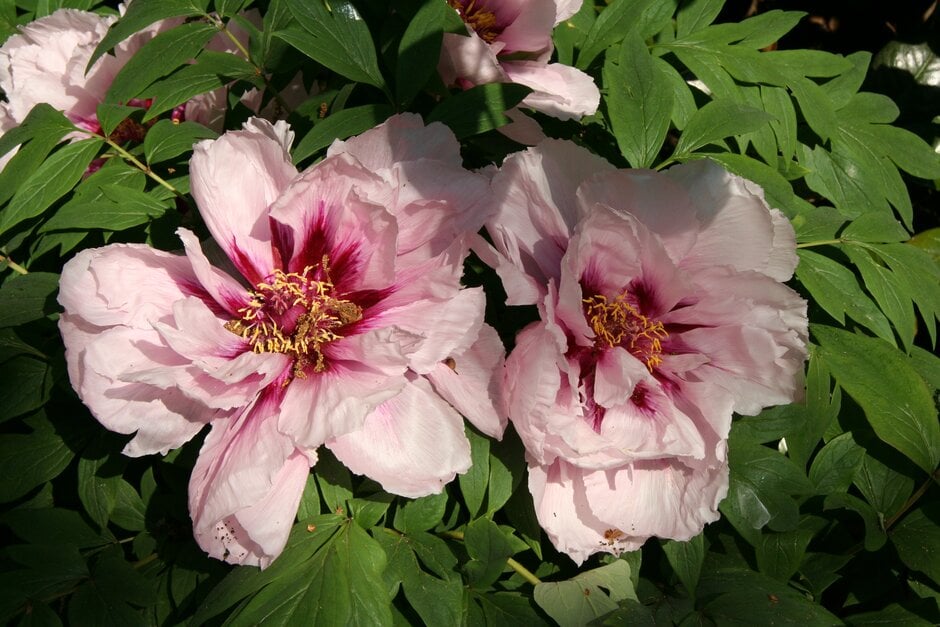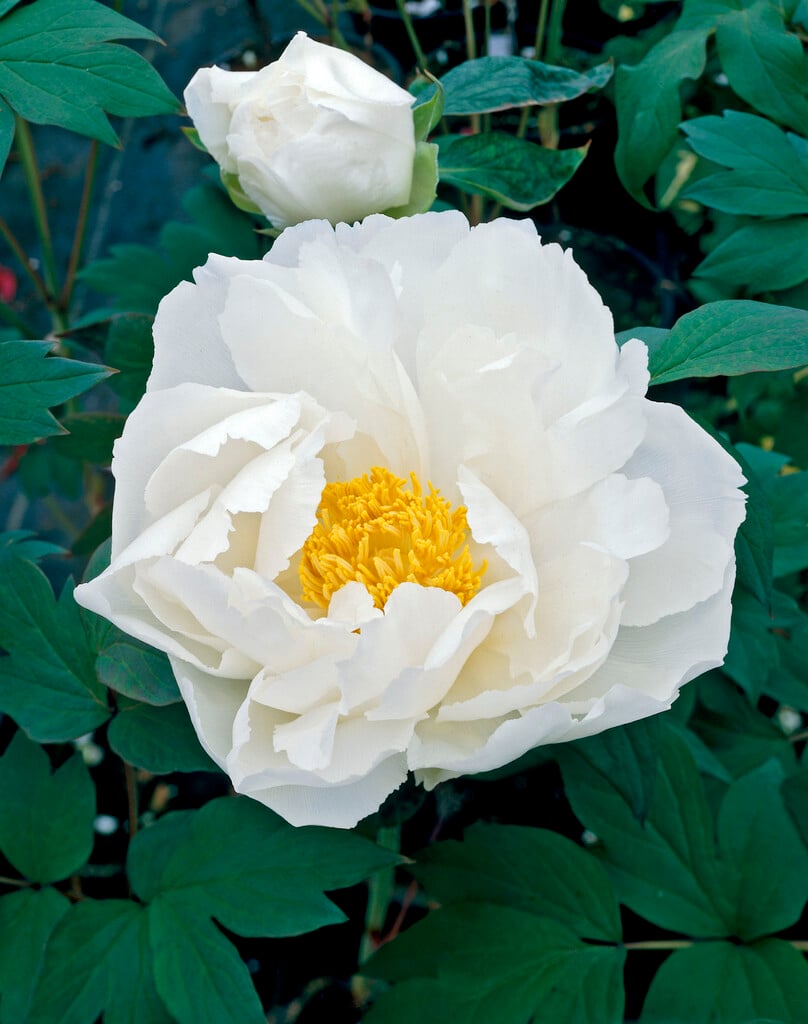Paeonia × suffruticosa (S)
tree peony
Paeonia x suffruticosa is an upright shrub to around 2m tall with divided leaves; large, variable, cup-shaped, single or semi-double flowers in shades of pink or white are borne in late spring and early summer
Size
Ultimate height
1.5–2.5 metresTime to ultimate height
5–10 yearsUltimate spread
1–1.5 metresGrowing conditions
Moisture
Moist but well–drainedpH
Acid, Alkaline, NeutralColour & scent
| Stem | Flower | Foliage | Fruit | |
| Spring | Pink White | Green | ||
|---|---|---|---|---|
| Summer | Pink White | Green | ||
| Autumn | Green | |||
| Winter |
Position
- Full sun
- Partial shade
Aspect
South–facing or West–facing
Exposure
Sheltered Hardiness
H5Botanical details
- Family
- Paeoniaceae
- Native to GB / Ireland
- No
- Foliage
- Deciduous
- Habit
- Columnar upright
- Potentially harmful
- Pets (dogs, cats): Skin irritant. For further information and contact numbers regarding pets, see the HTA guide to potentially harmful plants
- Genus
Paeonia may be herbaceous perennials or deciduous sub-shrubs with large, divided leaves and showy large bowl-shaped flowers, usually in early summer
- Name status
Correct
- Horticultural Group
- Shrubby peonies are sparsely branched deciduous shrubs leaves divided into several finger-like lobes, and bowl-shaped flowers in late spring or early summer
- Plant range
- W China
How to grow
Cultivation
Grow in deep, fertile, humus-rich, moist but well-drained soil in full sun or partial shade, in an open position but with shelter from cold, drying winds; see tree peony cultivation for further information
Propagation
Propagate by semi-ripe cuttings
Suggested planting locations and garden types
- Cottage and informal garden
- City and courtyard gardens
- Flower borders and beds
- Wall side borders
Pruning
Pests
May be susceptible to leaf and bud eelworm and soil-dwelling swift moth larvae
Diseases
May be susceptible to a virus, honey fungus, Verticillium wilt, peony leaf blotch and peony wilt
Get involved
The Royal Horticultural Society is the UK’s leading gardening charity. We aim to enrich everyone’s life through plants, and make the UK a greener and more beautiful place.

